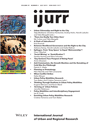Journalists, activists and academics alike predict that gay neighborhoods in the United States will disappear, yet many of their claims are unsubstantiated or overly determined by economic factors. This article examines 40 years of media accounts to identify the mechanisms that explain why these urban areas are changing. I begin with the observation that the rate of assimilation of sexual minorities into mainstream society has accelerated in today’s so-called ‘post-gay’ era. Assimilation expands the residential imagination of gays and lesbians beyond the boundaries of a specific neighborhood to the entire city itself. Furthermore, as sexual orientation recedes in centrality in everyday life, residents opine that few care if a person self-identifies as gay or straight. These two respective mechanisms of expansion and cultural sameness bring existing economic wisdom into dialogue with a cultural and political perspective about how our shifting understandings of sexuality also affect the decisions we make about where to live and socialize.
Articles
Details
Written by:
Amin Ghaziani
Digital Object Identifier (DOI)
10.1111/1468-2427.12209
About DOI
Read full article as PDF
Read full article as HTML
See the references for this article

